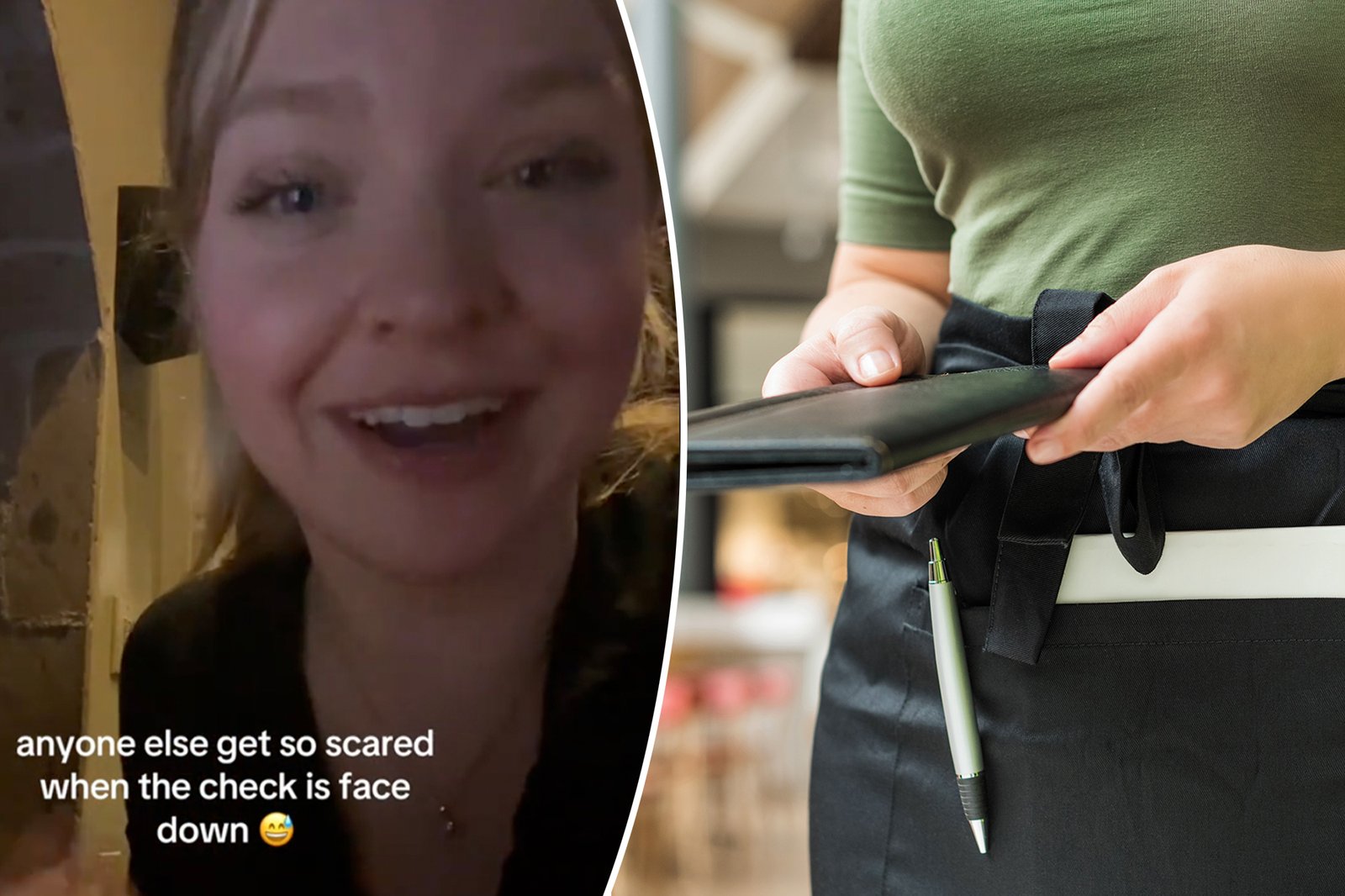Why Customers Leave Checks Face Down: Are You Part of the Trend?

Hey there, fellow food lovers! Today, we’re diving into the intriguing world of restaurant etiquette and a peculiar habit that’s been making waves on social media. If you’ve ever dined out, you might have noticed or even participated in this little ritual: leaving your check face down. It’s a small gesture, but it carries a lot of meaning, and as it turns out, servers have some interesting insights about it. So grab your favorite snack, settle in, and let’s explore what this habit says about us as diners!
I’m sure many of us have experienced that little flutter of anxiety when the check arrives at the table. Is it too much? Did I tip enough? These thoughts swirl around as we decide whether to leave the check face up or face down. Recently, a TikTokker named Saydie, known online as @realslimsaydie, shared her discovery about what it means when customers leave their checks face down. Her video went viral, amassing over 1.2 million views and triggering a lively discussion about tipping culture. Let’s unravel why this small act has such big implications.
Key Takeaways
- Leaving a check face down often implies uncertainty or dissatisfaction with the tip amount.
- Tipping culture in America is evolving, with varying perspectives based on age groups.
- The quality of service is the most significant factor influencing tipping behavior.
The TikTok Revelation
Saydie’s viral TikTok delves into an experience many servers know all too well. In her video, she shares the moment of truth when she flips over a face-down check to reveal a $15 tip on a $93 bill – roughly 15%. While not terrible, it certainly isn’t exceptional either. This moment sparked curiosity and conversation among viewers who began to reflect on their own tipping habits and what leaving the check face down might communicate to their server.
The gesture of leaving a check face down is often seen by servers as a sign that the customer may not be entirely satisfied with their dining experience or may feel uncertain about the tip they’ve left. It’s like sending a subtle message without saying a word. But why do diners do this? Is it an attempt to avoid confrontation or simply a habit passed down through generations? Whatever the reason, it has become a topic of interest for those both in and outside the restaurant industry.
The Tipping Culture Dilemma
Tipping has always been a hot topic in America, with expectations ranging from 15% to 20% depending on service quality. Yet, recent surveys indicate that many Americans are feeling overwhelmed by what some call “tipflation.” A study by Bankrate highlighted that nearly three in five adults harbor negative feelings toward tipping, with older generations being particularly shocked by rising expectations yet still tipping more frequently than younger folks.
This cultural shift is evident across generational lines. While baby boomers tend to tip generously despite their frustration with modern tipping practices, Gen Z diners are less consistent in their tipping habits. Only about 35% of Gen Zers always leave a tip at sit-down restaurants, compared to higher percentages among older generations. The driving force behind these decisions appears to be service quality, with most people indicating that they adjust their tips based on how well they were treated during their meal.
Strategies for Servers
As tipping dynamics evolve, servers must adapt to ensure they receive fair compensation for their hard work. Some have resorted to creative tactics to enhance their chances of receiving better tips. From adopting southern accents to wearing specific hairstyles or clothing items believed to influence customer generosity, servers are exploring various approaches.
However, it’s not just about appearances or gimmicks; genuine interactions and attentive service remain crucial factors in securing favorable tips. Diners appreciate servers who make them feel valued and respected throughout their dining experience. So while external strategies can help set the stage for better tips, it’s ultimately the quality of service that leaves a lasting impression on patrons.
Final Thoughts
In conclusion, leaving checks face down can be more than just an unconscious habit; it’s part of an ongoing dialogue between diners and servers in our ever-changing culinary landscape. Whether you’re someone who leaves checks face down as a matter of course or you’re now reconsidering your approach after learning its perceived impact—awareness is key. Understanding how small gestures like these influence perceptions can help us all become more mindful diners and appreciative patrons.
Next time you enjoy dining out remember every interaction counts—from how you greet your server right up until payment time! Let’s continue supporting each other within this intricate web we call “restaurant culture.”
